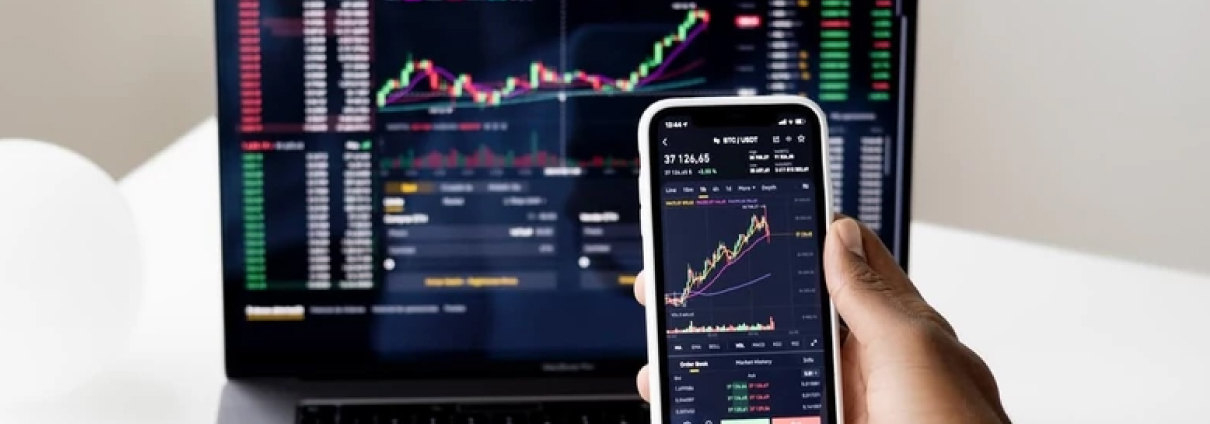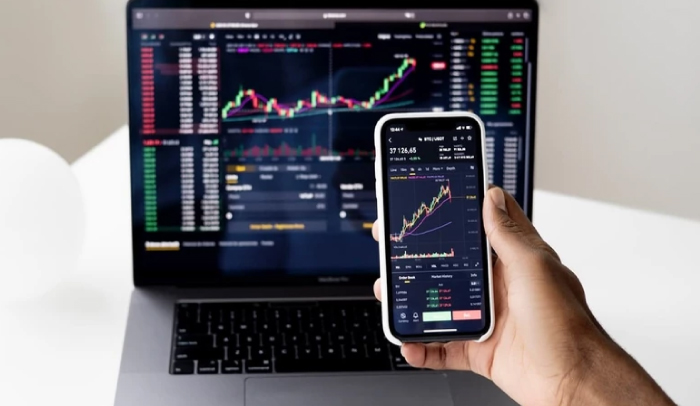As extensively discussed in several of our previous articles, in addition to fundamental analysis, Forex Trading Investment requires you to learn the elements of analyzing forex charts; and staying disciplined.
Having said that, it helps to chart out your own Trading Plan, and stay focused as much as possible, on that. The online forex market attracts different types of Traders, all of whom operate with distinct trading strategies, relying on various techniques to predict and speculate in the market. Various trading techniques adopted by different types of forex traders are mainly based on the knowledge of the forex market and the trading strategy that fits their goals and personality types.
In this article, we present and discuss the features of the 4 main types of Forex Traders you will find on the market.
DAY TRADERS
This is arguably the most common type of trader there is. As their name implies, Day Traders, or Intraday Traders, as they’re also called, operate on a day-to-day basis. This type of Trader opens and closes trades throughout the course of the day. In general terms, they operate with price action characteristics to buy, sell and hold trade positions. They tap into the price movements that occur within a day or a particular trading session; A currency’s price volatility and average day range, are elements that Day Traders take seriously. Thus, before a Day Trader initiates a trade, it’s essential that the pair in question have sufficient price movement. Since trading is established on the grounds of entering and exiting a trade position at a fast rate, volume and liquidity is very crucial. In effect, pairs with a small daily range or volume won’t be of much interest to Day Traders.
For Fundamental analysis, this category of traders focuses on events that are likely to cause short-term market moves. They are typically very knowledgeable and highly skilled in the market they choose to invest in. They employ a variety of techniques and make trading decisions quickly to ensure their success. To avoid the risk of slippage and overnight funding costs, Day Traders close out all their positions at the end of every day, leaving no positions running overnight. If you have a good grasp of price analysis and enough time on your hands to analyze the forex market and charts when the market opens, monitoring it throughout the day, you will find Day trading suitable.
Major Elements of Day Traders, Aside from Closing All Positions at The End of The Day Include:
- Engaging In High-Volume Trading
- Ability To Focus on Technical Patterns
- A Focus on Quick Turnover Rate
- Pairing Volatile Currencies Which Can Show Large Movements Within Short Time Fram
- Trading Through Day Averages and Characteristics Rather Than Long-Term Strategies
The success of the Day Trader depends on establishing how to trade and having a good operation and risk management plan in place. Since trading occurs within a short span of time, the ability to make quick decisions is of the essence.
POSITION TRADERS
On the opposite end of the spectrum from Day Traders, are Position Traders. This type of trading investment is long-term where you can take and hold positions over a period of several months, or even years. Unlike Day Traders, Position Traders are less interested in short-term price fluctuations, and rather pay attention to weekly and monthly price action analysis.
Although they combine both fundamental and technical analyses, Position Traders often adhere more strictly to fundamental analysis, while technical charts are a tool to help determine the best entry and exit points. When trading stocks for instance, Position Traders will pay more attention to earning reports, stock splits, reorganizations and acquisitions, looking out for associated opportunities.
The Distinguishing Features of Position Traders Include:
- Holding Fewer Trade Positions (Sometimes Only a Handful A Year)
- Making Decisions by Taking Economic Models, Governments, And Interest Rates into Account
- Working Across Major Currencies, As Well As Favorites of Emerging Markets
- Seeking To Capture the Bulk of a Position’s Movement in The Hope That It Will Appreciate Over Time
- Focusing More on Fundamental Analysis
On the positive side, Position Trading makes lower demands on a trader’s time, as compared to other trading investment styles; many Position Traders work on not more than 10 positions over a year, giving them enough time to develop other aspects of their portfolio. The draw-down, on the other hand, is that Position Traders tend to rely on a bet that a certain trend will continue, and when it doesn’t, the risk of long-term capital losses can be huge.
SWING TRADERS
Somewhere in between Day and Position Traders are Swing Traders, who make a profit investing in trading by holding a position anywhere from overnight to several weeks. While Position Traders hold trading positions over a longer period, Swing Traders hold their trades over the medium term; This involves price swings and holding their trades over the course of several weeks. As their name suggests, these traders buy when the market begins to swing upwards, and sell when this price swing halts, stops, or tops out.
Swing Traders make use of fundamental analysis, the intrinsic value of a pair, price trends, patterns, and technical analysis to search for financial instruments with short-term price momentum. The goal of this type of trading investment is to trade on large price moves daily by spending longer time frames (weeks to months) monitoring the pair in question. If you do not have all the time to analyze forex charts in as detailed a manner throughout the day, but only for a couple of hours, this trading strategy may be most ideal for you.
Swing Traders Operate with The Following Principles:
- A Focus on Global Trends Rather Than Daily Fluctuations
- A Blended Approach to Fundamental and Chart Patterns Analyses; They’ll Look at Macroeconomics as Well As Daily Trends
- A Focus on Short-Term Price Momentum to Capitalize on Upward Swin
- Placing More Positions in Liquid Currency Pairs Like the Pound and the Dollar
- Capturing High and Low Extremes
- A Focus on Technical Analysis of Price Movements
Successful swing trading can result in higher profits with relatively less risk, as compared to a buy-and-hold investor; This practice however requires a firm grasp of trading strategies and the ability to interpret trends well. In addition, Swing Traders are exposed to overnight and weekend risks where the next session may open with a substantially different price. It is thus best suited to experienced traders, not beginner traders.
SCALPERS
calp Traders, as the word suggests, scalp or take hold of trades for only a few minutes at a time. This type of Trader adopts a trading style involving specializing in consistently profiting from tiny price changes. This is done throughout the day, making small trades whenever the opportunity presents itself. Scalp Traders or scalpers spend incredible amounts of time focusing on forex chart analysis and are required to think very fast. The Scalp Trader’s main objective is to take hold of very small amounts of pips as many times as they can throughout the busiest times of the day. This style of trading is fast and action-packed, where Scalp Traders place dozens of trades in a day and close them as the trading day ends.
Although some believe there are fewer risks involved in scalping, it’s a strategy that requires the trader to place multiple trades in one trading day and maintain a very high level of concentration. In a sense, it can be considered one of the most difficult trading styles, especially due to the large trading volumes made by computer algorithmic platforms and high-frequency trading software. It usually works for people just trying their hands at various strategies to find what suits them best.
The Main Principles of Scalp Traders Include:
- Ability To Spot Opportunities
- Making Quick Decisions
- Constantly Processing New Information
- Reacting To Sudden Changes in The Market
Scalp Traders must have a strict exit strategy since a significant loss can wash away any small gains they may have made.
Each of the types of Forex Traders we have explained above suits a particular personality type, and it helps if you understand whether a certain style of trading best suits you; be it a Day Trader, Scalper, Swing Trader, or Position Trader.
Whereas a Scalper needs to stay alert and grab tiny amounts of Percentage in Points (pips) several times in the day, a Day Trader could pick a side at the beginning of the day, hold on to it, and end the day either winning or losing. Swing Traders also hold on to their trades for days or a couple of weeks, focusing on the charts or taking up forex market analysis a few hours a day to make their trading decisions, while Position Traders hold on to their trades for months, or even years in some instances, basing their decisions on fundamental and a certain amount of technical analysis.
Now that you know about the main types of Forex Traders in the market, if you’re trading as a beginner, we advise you not to mimic other traders blindly or immediately jump at the strategies of experienced market investors. Rather, you can try out different approaches gradually to find out what best suits you and what style you’re most comfortable with. Generally, though, while Swing Trading and Position Trading are more suited for long-term trading investors who rely more on fundamental factors, Day Trading would be the ideal choice for traders who have a bit more time to trade the forex markets and wish to be more neutral in their trading direction.
Whether you choose the fast-paced method of Day Trading or the prolonged marathon of Position Trading, selecting the right trading investment style for you will maximize your chances of profitable online forex trading.
Which Style Is Suitable for You?
If you need help developing your trading style, as a beginner trader, you can start by determining how much time you have available to dedicate to trading on a daily basis. If a few hours a day is all you can put in, then perhaps, short-term Day Trading may be suitable for you. If you happen to find that rather stressful, a medium-term Swing style might be more appropriate, making sure you keep the potential risks in mind. On the other hand, if you feel you have very little time to dedicate to trading, then maybe you should consider Position Trading.
While some traders have gone from being short-term traders to long-term traders, as a result of responsibilities in life that only increase with time, others have retired from their primary careers and decided to take advantage of their newly available free time to trade short-term, after being long-term traders for a while.
In the end, whatever you find suitable for your person, remember to keep in mind that online forex trading investment is a business and should be treated as such. Whether it’s long-term or short-term, the important thing is to minimize risk and maximize reward, while keeping an eye on news and other factors that could affect your trading strategy.












